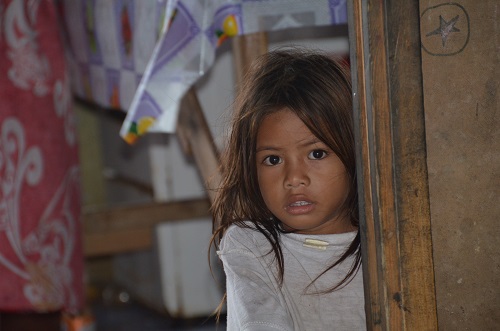While making the ground-breaking documentary ‘A Plastic Ocean’, Joanne Ruxton and Jessica Hickie came to the dark realisation that plastic pollution has infiltrated our food chain.
Ruxton, J. & Hickie, J., A Plastic Ocean: Behind the lens. Geoscientist 29 (9), 10-15, 2019
https://doi.org/10.1144/geosci2019-050;
Download the pdf here
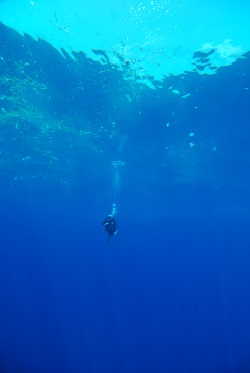 Fig 1: Cameraman, Doug Allen, filming plastic on the surface where the Blue Whales fed. Location: offshore Sri Lanka, Indian Ocean (© David Jones)
Fig 1: Cameraman, Doug Allen, filming plastic on the surface where the Blue Whales fed. Location: offshore Sri Lanka, Indian Ocean (© David Jones)
The 2017 documentary, A Plastic Ocean, features journalist, Craig Leeson, freediver, Tanya Streeter, and an international team of scientists as they travelled around the globe investigating the causes and consequences of plastic pollution. Over four years of exploration, the team came to realise the startling extent of plastic pollution in our fragile oceans and ecosystems. Here, documentary producer, Jo Ruxton, and researcher, Jessica Hickie, provide a behind-the-camera peak at this game-changing documentary.
Engaging audiences
Jo: Back in 2009, when I decided to make a film about the problem of plastic waste in the ocean, my perspective of the issue was limited to the effects of plastic on marine life, with entanglement and ingestion being the focus. I had also heard stories of a giant floating island of trash, the so-called, ‘Great Pacific Garbage Patch’ in the centre of the Pacific Ocean. The very thought of that was horrifying, but I was soon to learn that the reality of it was worse and I was unsure how to document these horrors in a way that would engage audiences.
I had been making underwater natural history films with the BBC for 12 years previously and although I wanted to include environmental messages in these, I was constantly told that no one is interested in bad news; we just had to entertain our audiences. I knew that to make a success of an environmental film, I would have a better chance if there were a positive ending and, for A Plastic Ocean, I was given the perfect scenario. A fleet of decommissioned fishing boats was destined to head out to the centre of the Pacific Ocean accompanied by a ‘mothership’ containing a plastic-to-fuel plant. The aim was to happily collect plastic from the ocean and use it to fuel the expedition. It all sounded too good to be true and, of course, it was.
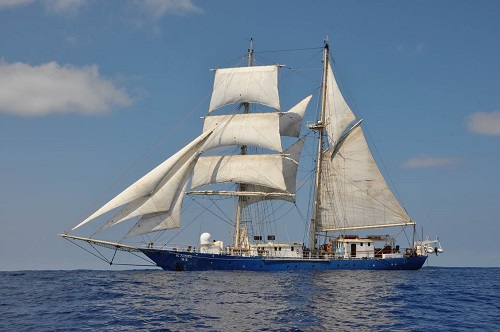
Fig 2: Our vessel at the centre of the 'Great Pacific Garbage Patch’ (© Joanna Ruxton)
Invisible threat
Jo: I joined an expedition out to the North Pacific with a group of scientists and volunteers. At the centre of the ocean the whole focus of the film took a sharp turn—and I even questioned continuing with it. We planned to film the massive ‘continent of plastic’ using overhead camera cranes (at a time before everyone had drones) and subsurface cameramen below, looking up through the creaking, moving mass with shafts of light shining through. However, the truth revealed itself in a very different way.
There is hardly any visible floating plastic out there. Yes, there are occasional crates, bottles and tiny specs of polystyrene on the surface but apart from that, the ocean centre looks clear, blue and inviting. Where was all the plastic? It was there that I learned the insidious truth about this ‘garbage patch’: most of it is invisible from the surface.
Our scientists used fine-mesh plankton nets to trawl the surface for micro-plastics. They began 400 miles west of San Francisco and continued each day on our way to the ocean centre. I was horrified to see even tiny fragments of plastic revealed—but they were nothing. The closer we travelled toward the ocean centre, the more plastic accumulated in the plankton nets until, at the heart of the ocean, every net deployed came up choked with plastic fragments that were invisible from the surface. Our lead scientist on the expedition, Dr. Andrea Neale, estimated a 26:1 ratio of plastic to plankton out there.
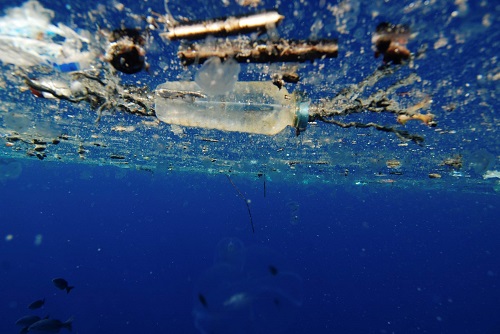 As a filmmaker, this revelation presented a problem because the story had taken a sudden turn. It was clear that plastic wasn’t just entangling marine creatures, micro-plastics were entering the marine food chain at the very lowest level—what might this mean for top predators? We sit at the very summit of that food chain and millions of people around the world rely on fish as their main source of protein. Visually, the film idea faced a challenge: as interesting as the story had become, what could we actually show? Even an audience of dedicated marine scientists would soon tire of images of plastic-filled sieves—I toyed with the idea of making a radio programme instead.
As a filmmaker, this revelation presented a problem because the story had taken a sudden turn. It was clear that plastic wasn’t just entangling marine creatures, micro-plastics were entering the marine food chain at the very lowest level—what might this mean for top predators? We sit at the very summit of that food chain and millions of people around the world rely on fish as their main source of protein. Visually, the film idea faced a challenge: as interesting as the story had become, what could we actually show? Even an audience of dedicated marine scientists would soon tire of images of plastic-filled sieves—I toyed with the idea of making a radio programme instead.
At the same time, new science was emerging that would add a critical new dimension to the story.
Fig 3: Floating plastic (© David Jones)
Stark realisation
Jessica: When I was asked to research some storylines around micro-plastics and human health, it came as a bit of a surprise. This was in 2010, when most didn’t give a second thought to using single-use plastic before throwing it in the bin and images of entanglement and starving whales were rare, let alone any mention of tiny pieces of plastics.
I started reading the scientific literature published at the time and talking to the relatively few scientists working in this field. As my research continued, I struggled to find published work directly linking our plastics-obsession with a health risk and the developing storyline was more of a joining-the-dots exercise. I found papers that told different parts of the story: the increasing prevalence of micro-plastics in our environment; the effects of chemical additives such as Bisphenol A, Phthalates and flame retardants on endocrine systems, foetal development and cancer risk; the hydrophobic properties of plastics leading to adsorption of extra toxins from the surrounding waters increasing the concentration; and the potential for bioaccumulation through animal tissues, up the food chain. There was limited research on this at the time and implications on not just the health of the oceans, but to us, were concerning.
A long journey
Fig 4: Crew looking for blue whales (© Joanna Ruxton)
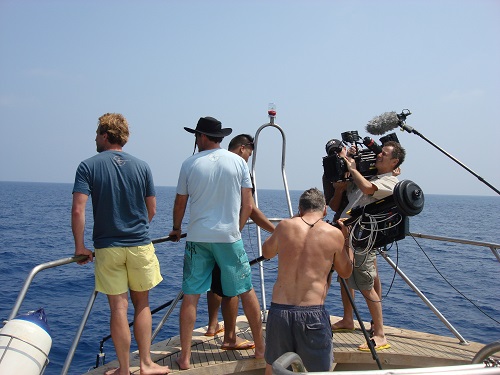 Jo: With this newfound knowledge pouring in, I realized that the film was quickly becoming more than just a documentary about plastics. It was about everyone. I began to search for ways to highlight the issue to a much wider audience, but needed to draw them in before covering the scary science. I decided that whales might serve us best to carry and open the film. Who can resist a Blue Whale? They tick all of the charisma boxes after all! It was an 8-year process to the exact month from deciding to make the film to its release in January 2017 and much of the delay was due to the difficulty of raising funds. It took 2-years of fundraising and research before we even ventured out to the Indian Ocean for our Blue Whale shoot and that one was far from easy.
Jo: With this newfound knowledge pouring in, I realized that the film was quickly becoming more than just a documentary about plastics. It was about everyone. I began to search for ways to highlight the issue to a much wider audience, but needed to draw them in before covering the scary science. I decided that whales might serve us best to carry and open the film. Who can resist a Blue Whale? They tick all of the charisma boxes after all! It was an 8-year process to the exact month from deciding to make the film to its release in January 2017 and much of the delay was due to the difficulty of raising funds. It took 2-years of fundraising and research before we even ventured out to the Indian Ocean for our Blue Whale shoot and that one was far from easy.
And so, the documentary begins with Craig and Tanya searching for blue whales in what was expected to be pristine ocean. Whilst out filming in their environment, we came across huge amounts of plastics, floating on the surface of the oceans and within the water column where they were feeding.
Three days into the shoot with nothing to show but a few topside shots, the Japanese Tsunami happened and, I can only assume, the whales detected something in the oceanic response to far-off movements of the vast tectonic plates and they left the area all together. Then in true natural history filming form, it all happened on the last day. Huge slicks of plastic waste floating on the surface allowed us to capture important footage for our film. Flights home loomed, so we started to head back to the port. As we dismantled the cameras and began to pack up, our cetacean biologist, Dr. Lindsay Porter, yelled from the flying bridge, “Whales—seven of them!” And, doing the boating equivalent of a handbrake turn, we steamed back and captured all the footage we needed in the last two hours of our two-week shoot.
Human connection
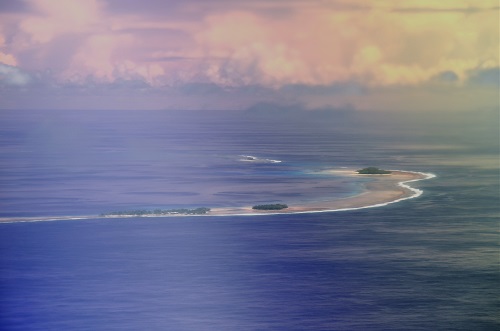 Jo: The toxin-related health story weaves throughout the film. We show animals in desperate situations and the underlying threat is obvious, but the effect on humans is harder to connect, simply because it is not possible to ‘experiment’ on humans with hazardous chemicals: the best we can say is that plastic carries and leaches chemicals and, in the lab, these have been linked to critical disease in other mammals. However, for me the story that really brought it home in a powerful way was filming in Tuvalu. Even now when I watch that sequence, it is enough to make me well up.
Jo: The toxin-related health story weaves throughout the film. We show animals in desperate situations and the underlying threat is obvious, but the effect on humans is harder to connect, simply because it is not possible to ‘experiment’ on humans with hazardous chemicals: the best we can say is that plastic carries and leaches chemicals and, in the lab, these have been linked to critical disease in other mammals. However, for me the story that really brought it home in a powerful way was filming in Tuvalu. Even now when I watch that sequence, it is enough to make me well up.
Fig 5: The islands of Tuvalu. Since importing plastic, there has been a rise in the number of incidents of illness associated with the additives in plastic (© Joanna Ruxton)
Tuvalu is a tiny island archipelago in the South Pacific Ocean. Once part of Kiribati, it gained independence in the late 1970s. From that point onwards, the sustainable natural lifestyle of the inhabitants began to change. They began importing goods from Asia and whatever they imported came packaged in plastic. Over the years, the plastic waste began to take over the islands. The lagoon on the main island filled up with it and poisoned the fish. Fish are no longer on the menu, but they are still fed to the pigs. Plastic is burned perpetually and even cooking stoves are started by melting plastic bags. The sickness we encountered within the family group we filmed was overwhelming. The family comprised 30 people, of which six had cancer and two had died of it in the previous 18 months. The kids were coughing all the time, but with so few toys to play with, many amused themselves by melting plastic in bonfires. Sadly, so many island nations are heading the same way.
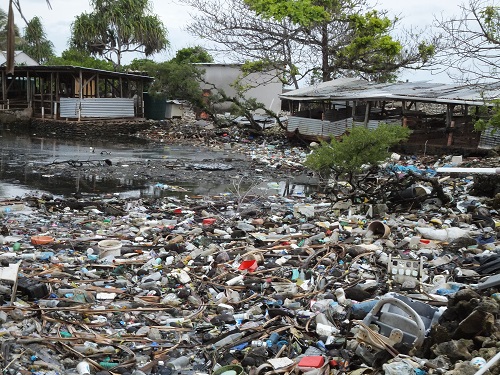
Fig 6: Tuvalu village where filming of the extended family took place (© Joanna Ruxton)
I wish I could say that the remaining shoots were trouble-free and that funding was the only obstacle, but we were plagued by bad weather and rough seas throughout. Now, 10 years after it all began, we are proud of the result and quite overwhelmed at the reception the film has received throughout the world. It has picked up 15 awards and been described by Sir David Attenborough as ‘The most important film of our time’. It was the inspiration for including plastics in the Blue Planet 2 series and is available on Netflix in 60 countries, with subtitles in 15 languages. It can also be seen on Amazon and iTunes.
We continue to deliver our message through our global education programme, our work in sustainability and our support of scientific research (https://education.plasticoceans.uk/).
Jessica: The time spent working on the film and the effect it has had on the public has highlighted to me the importance of communicating environmental issues to a wider audience. I have continued my work on public engagement in plastics and sustainability for the Environment Agency, managing a team that works tirelessly to make plastic pollution a thing of the past.
NOTE: Guidelines for boat traffic and interactions with whales were strictly adhered to at all times.
Authors
Joanna Ruxton, CEO, Plastic Oceans UK @joruxton @plasticoceans @plasticoceansuk www.plasticoceans.uk
Jessica Hickie, Programme Manager, Plastics and Sustainability Team, Environment Agency @jessicahickie
Fig 7: One of the little girls from the Tuvalu village family (© Joanna Ruxton)
